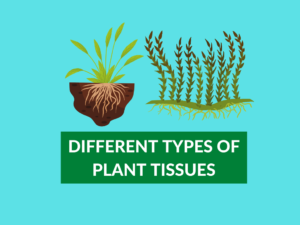Difference Between Animal Tissue and Plant Tissue
Introduction
Understanding the differences between animal tissue and plant tissue is crucial in comprehending the unique characteristics and functions of these fundamental building blocks of life. While both types of tissues have similarities in structure and function, they also possess distinct features that set them apart. In this article, we will explore what animal tissue and plant tissue are, their examples, uses, and most importantly, the key differences between them.
What is Animal Tissue?
Animal tissues are groups of cells with similar structures and functions that work together to perform specific tasks in an animal’s body. These tissues are categorized into four main types: epithelial tissue, connective tissue, muscle tissue, and nervous tissue.
Examples of Animal Tissue
Some examples of animal tissue include:
- Epithelial tissue: It covers the surfaces of organs, lines body cavities, and forms glands.
- Connective tissue: It provides support, protection, and insulation for organs and structures.
- Muscle tissue: It enables movement and contraction in the body.
- Nervous tissue: It transmits and processes information, enabling coordination and control.
Uses of Animal Tissue
Animal tissues have numerous uses, including medical research, pharmaceutical development, tissue engineering, and veterinary studies. They are also critical in understanding the pathology and treatment of various diseases in animals and humans.
What is Plant Tissue?
Plant tissues, like animal tissues, are groups of specialized cells that work harmoniously to perform specific functions in plants. Plant tissues are divided into three main types: dermal tissue, vascular tissue, and ground tissue.
Examples of Plant Tissue
Here are a few examples of plant tissue:
- Dermal tissue: It covers the outer surface and protects the plant from physical damage and pathogens.
- Vascular tissue: It consists of xylem and phloem and is responsible for transporting water, minerals, and sugars throughout the plant.
- Ground tissue: It makes up the bulk of the plant body and is involved in photosynthesis, storage, and support.
Uses of Plant Tissue
Plant tissues have various uses, including agricultural practices, horticulture, forestry, and ecological research. They are essential in understanding plant growth, development, and responses to environmental factors like light, temperature, and nutrient availability.
Differences Between Animal Tissue and Plant Tissue
| Difference Area | Animal Tissue | Plant Tissue |
|---|---|---|
| Growth | Most animal tissues show limited growth throughout the organism’s lifespan. | Plant tissues exhibit continuous growth throughout their lifespan. |
| Cell Wall | Animal tissues lack cell walls. | Plant tissues possess cell walls made of cellulose. |
| Cell Shape | Animal tissues have diverse cell shapes and sizes. | Plant tissues often have rectangular-shaped cells. |
| Energy Storage | Animals store energy in the form of glycogen. | Plants store energy in the form of starch. |
| Organelles | Animal tissues have centrioles and lysosomes. | Plant tissues lack centrioles and have large central vacuoles. |
| Photosynthesis | Animal tissues cannot perform photosynthesis. | Plant tissues contain chloroplasts and can perform photosynthesis. |
| Motility | Animals have many motile tissues responsible for movement. | Plants lack motile tissues and rely on external factors for movement. |
| Respiration | Most animal tissues perform aerobic respiration. | Plants carry out both aerobic and anaerobic respiration in different tissues. |
| Regeneration | Some animal tissues have limited capacity for regeneration. | Many plant tissues possess high regenerative potential. |
| Cell Division | Animal tissues undergo mitosis for growth and repair. | Plant tissues undergo both mitosis and meiosis for growth and reproduction. |
Conclusion
In summary, animal tissue and plant tissue significantly differ in various aspects, including growth, cell walls, cell shape, energy storage, organelles, photosynthesis, motility, respiration, regeneration, and cell division. These differences reflect the specific adaptations and requirements of animals and plants in their respective environments.
People Also Ask
- Q: Can animal tissues perform photosynthesis?
A: No, animal tissues cannot perform photosynthesis as they lack chloroplasts. - Q: Do plant tissues have cell walls?
A: Yes, plant tissues possess cell walls made of cellulose. - Q: Are animal tissues capable of regeneration?
A: Some animal tissues have limited regenerative capacity. - Q: What is the primary function of connective tissue in animals?
A: Connective tissue provides support, protection, and insulation to various organs and structures in animals. - Q: How do plant tissues transport water and nutrients?
A: Plant tissues use xylem and phloem to transport water, minerals, and sugars throughout the plant.


